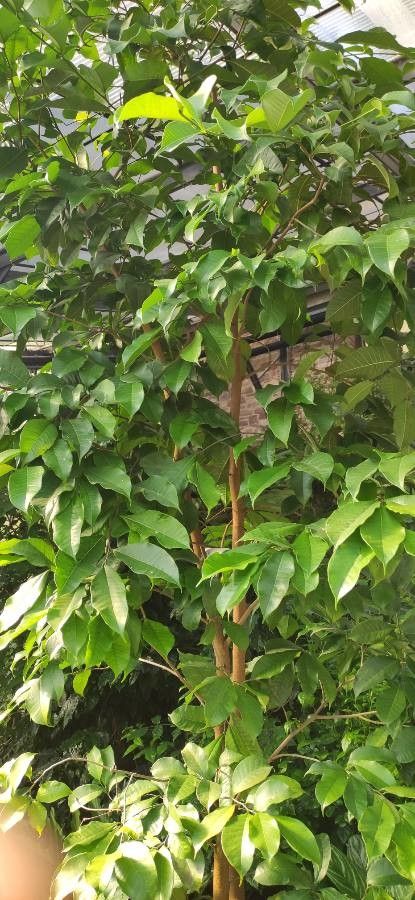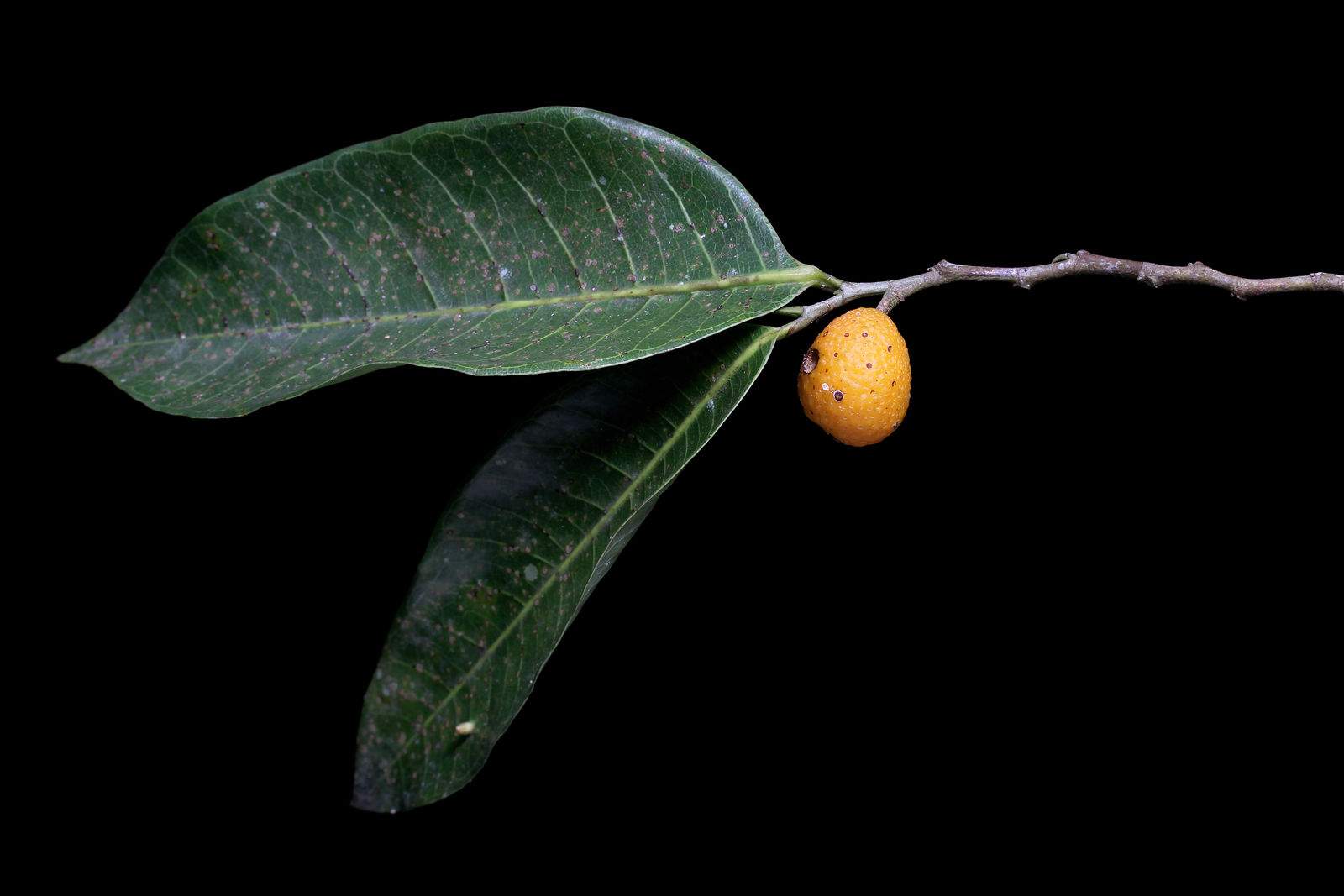Maya nut, Ramón nut, Ojoche, Ojushte, Ujushte
brosimum alicastrum
Also known as: ["Maya nut","Ramón nut","Ojoche","Ojushte","Ujushte","Breadnut"]
Overview
A large tropical tree native to Central and South America, valued for its edible seeds and ecological importance.
Benefits & Perks
["edible fruits","wildlife attractant (bees, butterflies, birds)","shade tolerant","drought tolerant"]
Botanical Classification
| Phylum: | Magnoliophyta |
| Class: | Magnoliopsida |
| Order: | Rosales |
| Family: | Moraceae |
| Genus: | Brosimum |
| Botanical Name: | Brosimum alicastrum |
Plant Characteristics
Basic Information
- Category: Trees
- Suitable Location: outdoor garden in tropical or subtropical regions
- Suitable For:
- Is Weed: No
- Allergenicity: low
Environmental Needs
- Climate: {"temperatureRange":"10–35°C"}
- Hardiness: {"zones":"9–11"}
- Misting: rarely required
- Drainage: Fast-draining to prevent waterlogging.
- Soil Type: Well-draining, fertile soil with organic matter; cactus mix amended with compost works well.
Maintenance Level
- Maintenance Level: moderate
- Toughness Level: high
- Pruning Frequency: As needed, typically every 6–12 months or after flowering.
- Pruning Intensity: Moderate; remove up to one-third of growth if necessary.
Care Details
Ideal Sunlight Coverage:
Bright indirect light for 6–8 hours daily; can tolerate some direct morning sun but avoid harsh afternoon sun.
Sunlight Tolerance Tips:
Acclimate gradually to direct light, protect from intense midday sun, adjust placement based on indoor/outdoor conditions.
Care Requirements
Care Difficulty
moderatemoderate
Sunlight
full sun to partial shade
Rotate plant for even growth; use sheer curtains to filter intense light; move outdoors in spring/summer for stronger light.
Watering
every 7–10 days during growing season, reduce in winter
Water thoroughly until it drains from the bottom, allow soil to dry between waterings, avoid overwatering.
Soil
well-draining, fertile loam
pH: Slightly acidic to neutral (pH 6.0–7.0).
Use a mix with good drainage; avoid heavy clay soils; top-dress with compost annually.
Temperature
Prefers 65–85°F (18–29°C); tolerates mild fluctuations but avoid prolonged exposure to extremes.
Avoid drafty areas; maintain stable temperatures; protect from sudden drops or spikes.
Fertilizing
every 2 months during active growth
Fertilize only when actively growing; flush soil occasionally to prevent salt buildup; avoid overfertilizing.
Propagation
Methods
Stem cuttings or seeds; stem cuttings are more common for home growers.
Step-by-Step Propagation Guide
- Take a healthy cutting, apply rooting hormone, plant in medium, maintain humidity, wait for roots.
Best Time: Spring or early summer when the plant is actively growing.
Environment
High humidity (70–90%), warm temperatures (75–85°F), and indirect light.
Medium
Well-draining mix of peat, perlite, and sand or cactus mix.
Hormone
Rooting hormone is recommended to improve success rates.
Timeline
Roots may develop in 4–8 weeks; new growth may take several months.
Tools Needed
Pruning shears, rooting hormone, propagation tray, plastic wrap or dome, well-draining medium.
Quick Tips
Use healthy, non-flowering stems; maintain consistent moisture; provide bottom heat if possible.
Pruning & Repotting
Pruning Guide
Method
Selective pruning of stems, pinch back tips for bushier growth, remove crossing or crowded branches.
Pruning Plan
Prune to maintain shape, encourage bushier growth, and remove dead or diseased parts.
Tools
Pruning shears, sterilized scissors, gloves.
Checklist
Sterilize tools, prune during dormancy or active growth, make clean cuts, dispose of clippings.
Repotting Guide
Best Season
Spring or early summer before the main growing season.
Pot Size
Choose a pot 1–2 inches larger in diameter than the current one.
Method
Remove plant gently, trim roots if needed, place in new pot with fresh soil, water lightly.
Suggestions
Repot every 2–3 years or when roots outgrow the pot; beneficial for growth and health.
Checklist
Check root bound status, prepare new pot with drainage, use fresh soil mix, water after repotting.
Advanced Care Tips
Watering Mastery
Watering Checklist
Check soil moisture, water deeply, ensure drainage, adjust for season.
How to Apply Water Properly
Water directly at the root zone, ensure water penetrates deeply to reach the root ball, allow excess water to drain completely, water in the morning to reduce evaporation.
Watering Schedule Tips
Water deeply once the top inch of soil feels dry; reduce frequency in winter to prevent root rot.
Soil Improvement
Add perlite or sand for drainage, incorporate compost for fertility, ensure good aeration.
Temperature Stress Management
Signs of Temperature Issues
Yellowing leaves, leaf drop, stunted growth, or wilting in response to sudden temperature changes.
Cold Stress
Slows growth, may cause leaf drop, and increases susceptibility to root rot due to reduced metabolic activity.
Solution: Move to a warmer location, insulate pots, avoid overwatering, and provide gentle warmth if needed.
Hot Stress
Leaves may scorch, wilt, or drop; soil dries out faster, increasing water stress.
Solution: Provide shade during peak heat, increase humidity, water more frequently, and ensure good air circulation.
Fertilizing Guide
Fertilizing Checklist
Check growth phase, use diluted fertilizer, apply to moist soil, avoid contact with leaves.
Fertilizing Method
Use balanced liquid fertilizer diluted to half strength every 4–6 weeks during growing season (spring/summer); reduce or stop in fall/winter.
Common Problems & Solutions
Toxicity Warning
Cats
Slightly ToxicCats may suffer mild gastrointestinal issues if they consume the seeds or unripe fruits of Brosimum alicastrum. Ripe fruits are generally safe for cats in small quantities.
⚠️ Symptoms:
🌿 Toxic Parts:
⚡ Toxic If:
if eaten
Dogs
Slightly ToxicDogs may experience mild gastrointestinal upset if they ingest the seeds or unripe fruits of Brosimum alicastrum. The ripe fruits are typically safe for dogs in moderation.
⚠️ Symptoms:
🌿 Toxic Parts:
⚡ Toxic If:
if eaten
Humans
Slightly ToxicThe seeds and unripe fruits of Brosimum alicastrum contain compounds that can cause mild gastrointestinal distress and other mild symptoms upon ingestion. The ripe fruits are generally considered safe for consumption.
⚠️ Symptoms:
🌿 Toxic Parts:
⚡ Toxic If:
if eaten
Frequently Asked Questions
Q: Is the Maya nut tree suitable for small gardens?
A: No, it is a large tree requiring significant space.
Q: Can the seeds be eaten raw?
A: The seeds are typically cooked before consumption to improve digestibility.
Q: Does the tree require special care?
A: It is relatively hardy but benefits from occasional pruning and protection from frost.
Quick Reference
| Family: | Moraceae |
| Care: | moderate |
| Light: | full sun to partial shade |
| Water: | every 7–10 days during growi |
Get Expert Care Tips
Download the Plantious app for personalized care reminders and plant identification!
Google Play App Store








